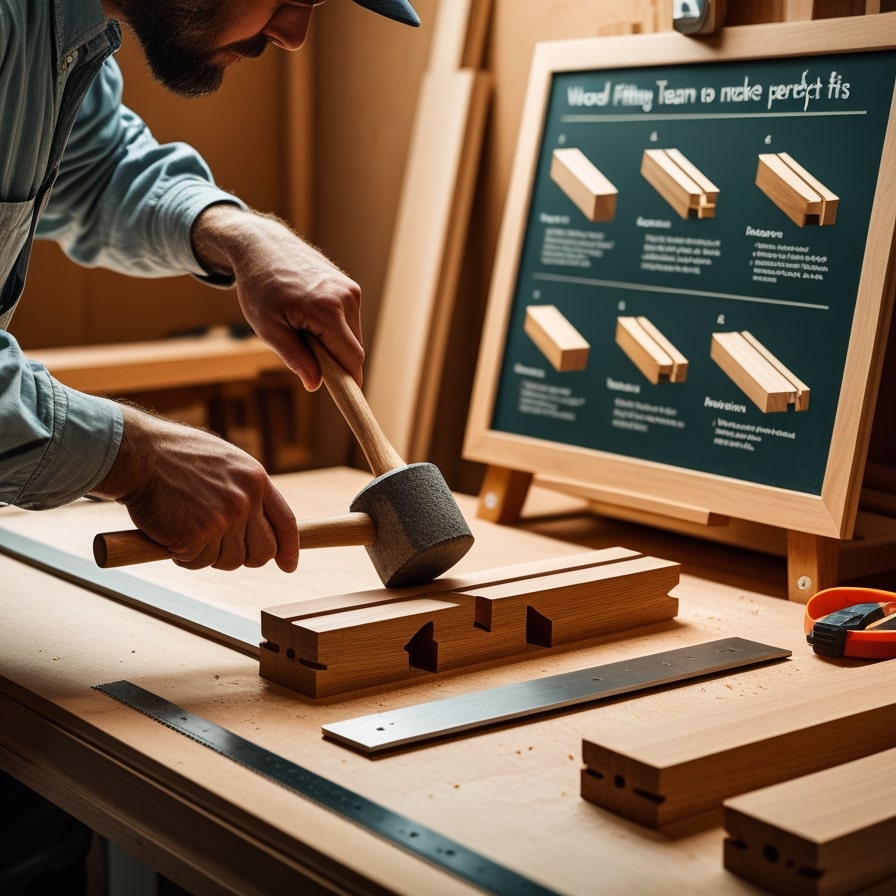The art of woodworking is filled with skills that require patience, precision, and technique. Among the most important are wood fitting techniques, which allow you to create strong and aesthetically pleasing connections.
If you want to enhance your skills and learn how to make perfect fits, this guide is for you.

Why Are Wood Fitting Techniques Important?
Wood fittings play a fundamental role in woodworking projects because:
- Ensure Stability: They provide structure and support to furniture and other wooden constructions.
- Enhance the Finish: They make projects more beautiful and refined.
- Reduce Excess Use of Nails or Screws: Making the pieces more sustainable and traditionally crafted.
Now, let’s explore the main fitting techniques and how to master them.
Types of Wood Fittings
1. Dovetail Joint
This is one of the most iconic joints, recognized for its strength and beauty. It is often used in drawers and wooden boxes.
How to Make It:
- Mark the Wood: Use a square and a marker to outline the tails and pins.
- Cut with Precision: Use a fine-tooth saw to follow the marked lines.
- Sand and Adjust: Use sandpaper or a chisel to adjust the pieces until they fit perfectly.
Tip:
Use a specific dovetail jig to ensure uniformity.
2. Sliding Dovetail Joint
Ideal for shelves or bases, this joint offers mobility and strength.
How to Make It:
- Draw the Profile: Mark the wood with the correct dimensions.
- Create the Cuts: Use a chisel or router to create the sliding joint.
- Test the Fit: The pieces should slide firmly without looseness.
3. Mortise and Tenon Joint
This is one of the most traditional and widely used joints in carpentry.
How to Make It:
- Cut the Tenon: Use a saw to create a rectangular projection on one of the wooden pieces.
- Make the Mortise: On the other piece, create a corresponding hole using a chisel or drill.
- Fit with Glue: For added strength, apply wood glue before joining the pieces.
Tip:
Ensure the tenon and mortise are the same size to avoid gaps.
4. Corner Lap Joint
This type of joint is ideal for forming right angles, commonly used in cabinets and boxes.
How to Make It:
- Mark the Cuts: Draw the dimensions with a square.
- Precise Cutting: Use a table saw or hand saw.
- Finish with Screws or Dowels: Optionally, reinforce the connection with additional elements.
Essential Tools for Perfect Fittings
To master these techniques, you will need:
- Chisels: To adjust and clean the cuts.
- Hand Saws: Preferably fine-tooth models for greater precision.
- Squares: For exact measurements.
- Jigs: For specific joints like dovetails.
- Wood Glue: To secure the pieces permanently.
Tips to Improve Your Skills
- Practice on Test Pieces: Before working on a final project, test your skills on wood scraps.
- Choose the Right Wood: Softer woods like pine are easier for beginners, while hardwoods require more skill.
- Adjust with Patience: Small adjustments make all the difference in a perfect fit.
Conclusion
Learning and mastering wood fitting techniques is essential for anyone looking to excel in woodworking.
With the right tools, practice, and attention to detail, you can create strong and elegant connections, elevating the quality of your projects.
Start experimenting with these joints today and discover the satisfaction of crafting something with your own hands!